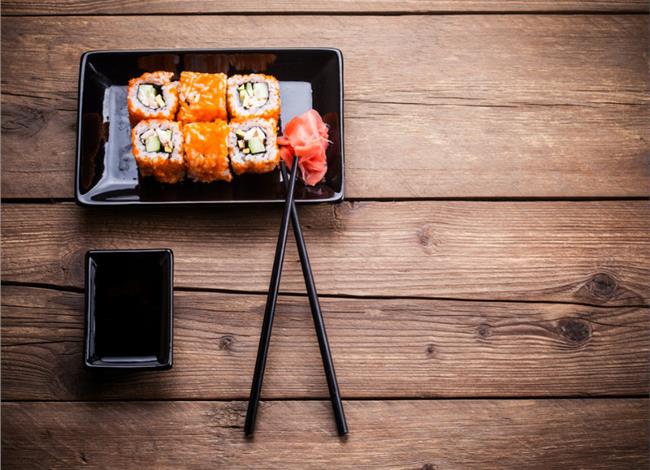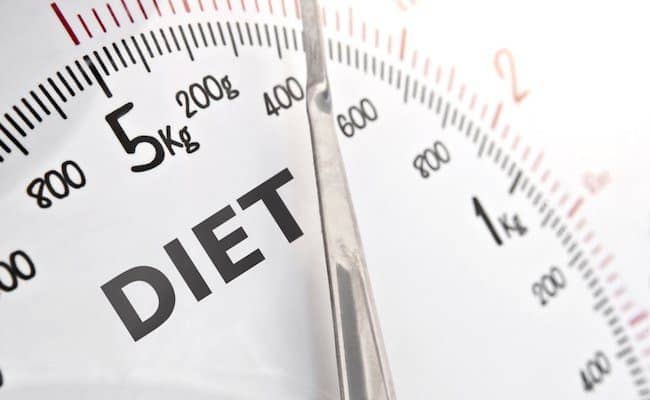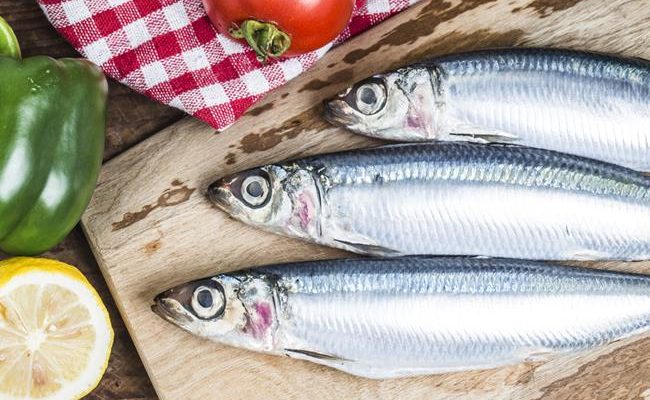
Sushi of course originates from traditional Japanese cuisine, and the Japanese culture traditionally has one of the lowest obesity rates in the world. In fact, Japan has had an average of 3% obesity rate compared with the Unite States that has about a 30% obesity rate. So, it makes sense to associate eating sushi with being good for weight loss. However, most sushi served in Western societies is a far cry from the traditional Japanese sushi.
Sushi can range from a couple hundred calories to easily 1,000 calories per meal. Sushi is available piled with fried crispies, rich creamy sauces and served in large portion sizes.
Sushi can be part of a healthy weight loss plan if you make smart choices about what is inside the sushi and how much you eat.
Avoid crunchy or fried
Tempura battered meat or veggies are a common favorite for Westernized sushi. However, these fried items in or on top of a sushi roll can add on a lot of calories. If a sushi roll has “crunchy” in the name, it probably means it’s going to have fried ingredients.
Stick with sushi that has raw or steamed ingredients in it for the lowest calorie amount.
Load up on the veggies
Most sushi restaurants have options for veggie rolls. Having this as part of your meal along with some sashimi can increase your vegetable and fiber intake with the meal, which can help you feel full longer after the meal.
Before eating sushi, a healthy weight loss option can be to eat a salad or vegetable soup before the meal. Studies have shown eating a salad or vegetable based soup before a meal can lower food intake at the meal (1).
If you’re at a restaurant, be aware that salad dressings can hide a lot of excess fat and calories. Get the dressing on the side.
Watch the sauces
Sauces can be a source of extra sugar or fat and can easily add on excess calories to a meal of sushi. Creamy sauces especially can dramatically change the nutritional profile of a sushi roll. If sushi comes with an added sauce, ask for it without the sauce.
Keep in mind this will drastically change the flavor of the sushi, but it will be more traditional served without a heavy sauce.
If you want to add flavor, add in the ginger and wasabi for an added flavor dimension instead of a rich sauce.
If something is listed as a spicy roll, chances are there will probably be a spicy cream based sauce on top. Ask for the roll without the sauce to lighten it up.
Another sauce to consider with sushi is soy sauce. Dunking sushi into soy sauce is a common practice. However, it may be in your best interest to use small amounts of soy sauce instead of liberally coating your sushi.
Soy sauce is high in sodium, and hours after eating a meal high in sodium can make you feel bloated, which is not conducive for weight loss. Eating high amounts of sodium can cause the body to retain water especially if you are sodium sensitive.
Limit the amount of soy sauce you use, and rely more on ginger to add flavor to your sushi if you need it. Also, keep in mind just because you may be using low sodium soy sauce, you still should watch your portion size. Low sodium soy sauce is still relatively high in sodium.
How much rice is in the roll?
Pre-made sushi can be mostly white rice with a little bit of meat or veggies because rice is a cheap filler ingredient. For the optimal weight loss sushi choice, pick sushi that has a thinner layer of rice and heavier on proteins and vegetables.
Some places also offer sushi with brown rice, which will be higher in fiber and may help keep you feeling fuller longer.
Watch portion size
As with any food, figuring out whether or not sushi will be a good weight loss food for you also depends on how much you’re eating. Part of following a traditional Japanese diet is eating smaller portion sizes, eating slowly, having a diet high in fruits, vegetables and having an active lifestyle.
It can be easy to overdue with sushi and realize too late you ate beyond feeling full. Eat slowly when you are enjoying sushi and stop before you feel stuffed.
Raw fish concerns
As with any raw seafood, there is a potential risk for getting sick from eating raw fish in sushi. If you have a compromised immune system or are pregnant, speak with your physician before eating raw fish.
Depending on where you eat your sushi, the quality of the fish and the freshness can vary greatly. These considerations may be important to consider if you are eating a lot of sushi. Fatty fish can have many health benefits. However, some types of fish may have mercury or other health concerns, so do your own research on what you feel comfortable with for eating raw fish.
Make your own
A healthy way to enjoy sushi is to make your own. That way you can control how much and what type of ingredients are going into it. You can control how much rice is used and you can easily go heavy on the vegetables when you make your own rolls.
You can even cook the fish at home before putting it in a sushi roll if that is a concern for you.
Making sushi yourself can be easy; you just need your ingredients and a bamboo sushi roller. Keep in mind your sushi rolls may not look the prettiest when you roll them at home, but it can be a way to enjoy a healthy version of sushi.
Conclusion
Sushi as part of a traditional Japanese diet can be part of a healthy weight loss diet. Sushi ranges greatly in nutritional content, so choose sushi with mainly raw or steamed ingredients for lowest calorie options.
Avoid heavy or high sodium sauces, and try to load up with higher vegetable sushi options instead of high amounts of rice.
As with any food, watching portion sizes is important. Part of a traditional Japanese diet that is associated with lower obesity rates is to eat slowly and eating to the point of feeling satisfied not stuffed.










